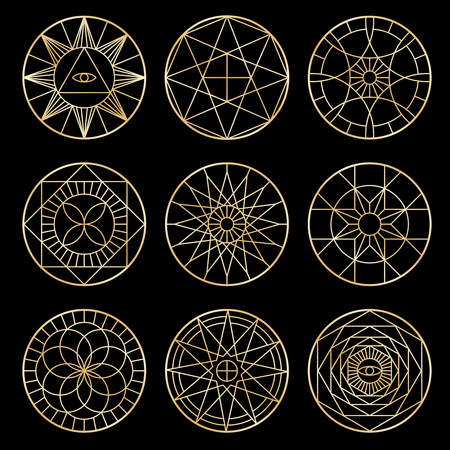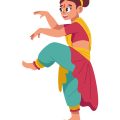1. Introduction to Shani Graha Yogas
In the vast landscape of Vedic astrology, Shani (Saturn) occupies a profound and formidable position. Deeply woven into the fabric of Indian culture and spiritual beliefs, Shani is not just another planet; he is the karmic judge, holding immense sway over the fortunes, struggles, and inner growth of individuals. The presence of Shani in a kundali (birth chart) is believed to reflect ones accumulated karma—both from this life and past existences. In India, Shani is revered and sometimes even feared for his strict, impartial approach to justice, teaching us that every action has its consequence.
Understanding Shani’s impact requires delving into his unique symbolism in Vedic thought. Often depicted as slow-moving yet powerful, Shani tests our patience, resilience, and commitment to dharma (righteousness). His influence is associated with discipline, obstacles, delays, and ultimately, the maturation of the soul through perseverance. Within the context of Kundali astrology, special yogas (planetary combinations) involving Shani can bring about significant shifts in an individual’s destiny—sometimes challenging but always aimed at spiritual evolution.
The reverence for Shani runs deep in Indian households. Saturdays are dedicated to his worship, temples across Bharat bustle with devotees offering oil lamps and black sesame seeds to appease him. Through these rituals and age-old remedies passed down generations, people seek relief from hardships and hope for blessings. Thus, exploring Special Shani Graha Yogas is not merely an astrological exercise; it is a journey into understanding how cosmic forces shape our lives according to ancient Indian wisdom.
Common Special Shani Yogas in Kundali
In Indian astrology, the planet Shani (Saturn) is known for its profound influence on one’s life, especially when it forms special yogas in the kundali or birth chart. Understanding these special Shani yogas can help individuals recognize periods of challenge and transformation. Here, we explore some of the most commonly discussed and impactful Shani yogas as per traditional astrological practices across India.
Shani Sade Sati
Shani Sade Sati is perhaps the most talked-about yoga in Vedic astrology. It refers to a seven-and-a-half-year period when Saturn transits over the natal Moon and its adjoining signs. This phase is known for testing an individual’s patience, perseverance, and emotional strength. In Indian families, elders often share stories about how Sade Sati brought important life lessons and eventual growth after overcoming hardships.
Phases of Shani Sade Sati
| Phase | Description |
|---|---|
| First Dhaiya | Saturn transits 12th from natal Moon – marks beginning of challenges and changes |
| Second Dhaiya | Saturn transits over natal Moon – peak period with maximum impact on mind and emotions |
| Third Dhaiya | Saturn transits 2nd from natal Moon – gradually eases out difficulties, brings realization and closure |
Shani Dhaiya (Kantak Shani)
This yoga occurs when Saturn transits through the 4th or 8th house from the natal Moon. Known as ‘Choti Panoti’ in many regions, Shani Dhaiya usually lasts for two and a half years. People experience stress related to health, family, or property matters. However, it is also believed that sincere effort and humility during this time can lead to personal growth and deeper resilience.
Shani-Mangal Dosh (Angarak Yoga)
The combination of Saturn (Shani) and Mars (Mangal) in a single house creates Shani-Mangal Dosh or Angarak Yoga. According to classical texts like Brihat Parashara Hora Shastra, this conjunction may lead to conflicts, aggression, or struggles with authority—especially if it appears in houses related to career or marriage. However, many pandits emphasize that this yoga also provides tremendous energy for overcoming obstacles if channeled positively.
Examples from Indian Astrological Traditions
| Yog Name | Cultural Reference/Belief | Typical Remedies Suggested by Astrologers |
|---|---|---|
| Sade Sati | Stories of famous personalities rising after setbacks; family rituals like oil donation on Saturdays are common during this phase. | Puja to Lord Hanuman or Lord Shani; lighting sesame oil lamps; reciting Shani Stotra. |
| Dhaiya (Kantak Shani) | Elders advise caution in property deals; increased focus on family harmony during transit. | Sankat Mochan Hanuman Chalisa path; offering black urad dal at temples; feeding crows. |
| Shani-Mangal Dosh (Angarak Yoga) | Youth are advised to manage anger; parents encourage meditation and community service as balancing acts. | Mars pacification rituals (Manglik dosha remedies); disciplined lifestyle practices; charity on Tuesdays/Saturdays. |
Each of these special Shani yogas carries unique significance within Indian culture, shaping not just astrological predictions but also influencing everyday choices, values, and spiritual outlooks. Recognizing these yogas offers a roadmap for self-improvement rooted deeply in tradition.

3. Impact of Shani Yogas on Different Bhavas (Houses)
In Indian Kundali astrology, the placement of Shani (Saturn) in various bhavas (houses) can deeply affect the individual’s life and family dynamics. Traditional Indian families often observe these influences keenly, as they believe Shani’s position can either challenge or uplift key areas of life such as wealth, relationships, career, and health.
Shani in Dhana Bhava (2nd House): Wealth and Family Finances
When Shani occupies the second house, it tends to bring a slow but steady accumulation of wealth. However, there may also be periods of financial constraint or family disputes over property. In many Indian homes, elders advise patience and disciplined savings when Shani is strong in this house, trusting that hard work will eventually pay off.
Shani in Kalatra Bhava (7th House): Relationships and Marriage
The presence of Shani in the seventh house often causes delays or challenges in marriage, which is a significant concern for traditional families who value timely alliances. While it may test marital harmony initially, with maturity and understanding, relationships can become deeply resilient. Family astrologers commonly suggest remedies like chanting Shani mantras or observing fasts on Saturdays to mitigate negative effects.
Shani in Karma Bhava (10th House): Career and Social Status
Shani’s placement in the tenth house is considered powerful for career advancement but demands sustained effort. Individuals might face repeated obstacles or slow progress in their professional journey. In Indian culture, this is interpreted as Shani teaching the value of perseverance and ethical conduct at work. Many seek blessings from elders or visit Shani temples to seek guidance and fortitude.
Shani in Vyaya Bhava (12th House): Health and Expenditure
If Shani sits in the twelfth house, concerns about chronic health issues or unexpected expenses can arise. Families may notice a tendency toward isolation or spiritual inclination during such periods. Remedies often include charity work, offering oil to Shani idols, or reciting sacred hymns to invoke healing energy and peace.
Cultural Insights: The Role of Family Guidance
Across generations in India, Shani’s yogas are not seen merely as fate but as opportunities for inner growth. Family elders share stories of resilience shaped by Saturn’s lessons, encouraging younger members to accept challenges with grace and faith. Thus, the impact of Shani yogas becomes a shared journey toward patience, discipline, and emotional maturity within the family unit.
4. Personal Growth and Life Lessons from Shani
In the intricate landscape of Kundali astrology, Shani Graha Yogas are revered for their powerful influence on personal growth and life lessons. Rooted deeply in Indian philosophical traditions, Shani (Saturn) is not merely a planet of restrictions but also a profound teacher who guides individuals toward inner strength and maturity. Through the lens of Vedic wisdom, Shani’s presence in one’s kundali is seen as an invitation to cultivate discipline, resilience, and a strong sense of dharma (duty).
Shani Yogas: Catalysts for Character Development
When special Shani yogas manifest in a horoscope, they often bring periods of challenge or delay. However, these are not punishments but rather opportunities to develop key qualities essential for lasting success. The following table highlights how distinct aspects of Shani yogas contribute to personal evolution:
Aspect of Shani Yoga |
Life Lesson Imparted |
Indian Philosophical Perspective |
|---|---|---|
| Discipline | Encourages self-control and regularity in actions | Karma Yoga: Performing duties without attachment to results |
| Resilience | Builds inner strength through facing adversity | Tapasya: Endurance as a means of purification and growth |
| Detachment | Teaches acceptance and surrender amidst uncertainty | Bhakti and Jnana Yoga: Letting go of ego-driven desires |
| Patience | Instills the value of waiting for the right time (samay) | Shraddha: Faith in divine timing and justice (Nyaya) |
The Transformative Power of Shani’s Challenges
The trials brought by Shani are compared to the blacksmith’s hammer—each strike refines the soul. In Indian families, elders often remind youngsters that “Shani dev teaches us the value of hard work and honest living.” This perspective encourages individuals to see obstacles as stepping stones rather than setbacks. Over time, those influenced by special Shani yogas become known for their unwavering perseverance and practical wisdom.
Cultivating Spiritual Maturity through Shani’s Guidance
Beyond material achievements, Shani yogas foster spiritual growth by prompting deep self-reflection. Individuals learn to accept responsibility for their actions, embrace humility, and recognize the impermanence of worldly gains. In Indian tradition, this journey is closely linked with attaining moksha—the ultimate liberation from the cycle of birth and death. By embracing the lessons offered by Shani, one can navigate life’s ups and downs with grace and equanimity.
5. Traditional Indian Remedies for Shani Yogas
Across India, the presence of special Shani Graha Yogas in a kundali is met with deep respect and a sense of responsibility to maintain harmony between cosmic influences and everyday life. For generations, families have turned to time-honoured upayas (remedies) when Shani’s position creates challenges or delays. Each remedy not only addresses planetary energies but also connects devotees with India’s rich spiritual heritage.
Shani Puja: Appeasing Lord Shani
One of the most widely practiced remedies is the dedicated worship of Lord Shani. Shani puja is commonly performed on Saturdays (Shanivar), which is considered auspicious for pleasing this slow-moving planet. Devotees visit Shani temples, offer black sesame seeds, blue flowers, mustard oil, and light lamps made of iron or clay. The rituals are often accompanied by the chanting of Shani mantras such as “Om Sham Shanicharaya Namah”, believed to reduce the adverse impact of tough Shani yogas in one’s chart.
Recitation of Hanuman Chalisa
The Hanuman Chalisa holds a special place in Indian households dealing with Shani doshas. Many believe that Lord Hanuman, being an ardent devotee of Lord Rama and a symbol of strength, can neutralise Shani’s malefic effects. Reciting the Hanuman Chalisa, especially on Tuesdays and Saturdays, is considered highly effective. In many regions, children learn these verses early in life as a protective measure against hardship and fear linked to unfavourable planetary placements.
Oil Offerings and Black Objects
A unique aspect of traditional remedies involves offering mustard oil to Lord Shani idols or pouring it over his feet in temples—a custom seen from Maharashtra’s famed Shani Shingnapur to small shrines across Tamil Nadu. Donating black clothes, black gram (urad dal), iron objects, and even feeding crows are practices rooted in symbolism; each item is associated with Saturn’s color and attributes, serving to please the graha and reduce its harshness in daily affairs.
Charity and Seva: Acts of Kindness
Another core upaya woven into Indian culture is charity (daan) performed with humility. Giving to those in need—especially the poor, elderly, or physically challenged—is thought to invoke Lord Shani’s blessings. Across cities and villages alike, donating food grains, shoes, blankets, or financial help on Saturdays is seen as both a spiritual duty and a practical way to foster good karma that counters negative yogas.
Cultural Continuity and Personal Growth
These remedies serve more than just astrological purposes; they strengthen community bonds and encourage self-reflection. Through rituals, recitations, offerings, and charity, individuals not only address planetary challenges but also nurture patience, discipline, and empathy—virtues that echo through every generation navigating the dance of fate as revealed by their kundali.
6. Contemporary Perspectives and Community Practices
In today’s fast-paced India, where tradition and modernity walk hand in hand, dealing with Shani Graha Yogas is no longer just about age-old rituals or visiting the local pandit. Many young Indians, especially in cities like Mumbai, Bangalore, and Delhi, are finding new ways to blend the wisdom of kundali astrology with modern mindfulness practices. You’ll hear folks saying, “Arre yaar, Shani ka dasha chal raha hai – meditation kar le!” instead of just running to temples.
For instance, while their parents might have observed strict fasts on Saturdays (Shanivar Vrat) or donated black sesame seeds, millennials and Gen Z are more likely to add journaling or mindful gratitude exercises into their weekly routine. They download astrology apps for daily predictions but also join yoga studios or online satsangs to keep their mental game strong when Shani feels heavy.
Community support has become a big part of this journey. WhatsApp groups buzz with reminders about simple remedies – like lighting a diya under a peepal tree or sharing stories of how chanting Hanuman Chalisa together brings peace. Aunties swap homegrown tips at kitty parties, while startups host webinars on “Astro-wellness” that mix planetary guidance with life coaching.
This fusion isn’t just about convenience; it’s about making ancient wisdom relevant in a world full of deadlines and digital distractions. As one young professional from Pune put it: “I follow my nani’s advice for Shani Jayanti but I also talk to my therapist about Saturnian challenges – balance hi toh hai!”
Ultimately, the Indian approach to Shani Graha Yogas today is a beautiful jugalbandi of heritage and innovation. Whether you’re following traditional remedies or embracing new-age self-care, what matters is staying connected to your roots while moving forward with awareness and compassion.


